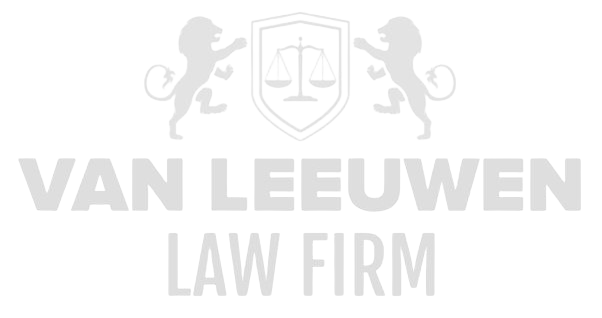Digital media no longer function as neutral channels for the transmission of information. In reality, they have evolved into cunning instruments of social fragmentation, tools through which the powerful of this era consolidate and safeguard their positions. Within the stately walls of boardrooms and the gleaming glass towers of multinational corporations, the influence of these digital forums represents a tangible strategic risk. It is not merely a matter of shaping opinion or public indignation; it is about subtle, often imperceptible, yet systematic distortions of facts that can directly undermine reputation, create legal liability, and sow strategic distrust among shareholders and regulators. When a single tweet or carefully crafted video alleging corruption, fraud, or violations of sanctions goes viral, it can instantly trigger stock declines, internal panic, and a chain reaction of legal inquiries that place even the most robust corporate governance structures under severe pressure.
The mechanism of digital polarization is sophisticated and relentless. Algorithms designed to maximize engagement systematically amplify the most extreme voices, regardless of factual accuracy. This means that allegations of financial mismanagement, bribery, or money laundering often spread faster and further than any subsequent legal clarification or factual rebuttal can contain. In a context where executives are accustomed to steering by KPIs, financial reports, and compliance frameworks, the digital arena introduces a variable that is nearly impossible to control. For the strategic thinker in the C-suite, a paradox emerges: transparency is a core value, yet every transparent action can, within a turbulent digital environment, be hijacked and transformed into a narrative of misconduct, fraud, or corruption. The consequences are profound: loss of market share, escalation of reputational risk, and initiation of costly legal proceedings.
The Strategic Risk of Digital Disinformation
Digital disinformation infiltrates decision-making processes in ways that surpass traditional risk management models. When unfounded allegations of financial malfeasance appear in the boardroom or public sphere, they generate a storm of uncertainty that directly affects investment decisions and the valuation of strategic assets. This is not a hypothetical scenario; it is the daily reality in sectors where competition, geopolitics, and financial interests intersect. Executives face a dilemma that transcends traditional compliance concerns. It demands a sophisticated understanding of digital channels, real-time monitoring of reputational risk, and a preemptive legal strategy, in which every move could be weaponized against the organization’s integrity and governance.
The strategic threat is further amplified by the speed at which digital media operate. In a world where an allegation of sanctions violations or corruption can become globally known within hours, conventional communication strategies lose effectiveness. For executives, this means that every public response, press release, or internal memo carries the potential to be repurposed as a weapon against the organization. Traditional hierarchies of information control have been replaced by a chaotic ecosystem in which truth, perception, and insinuation interact with unprecedented speed and intensity. Any incident can escalate into a full-scale corporate crisis, exposing not only financial repercussions but also legal liability and personal reputational risk for executives.
Polarization Amplifies Financial and Legal Risk
The influence of digital media on public opinion and internal decision-making carries direct implications for financial and legal risk. When employees, stakeholders, or the general public are confronted with narratives of fraud, corruption, or sanctions violations, pressure emerges that extends far beyond conventional market reactions. The board is compelled to respond quickly, often in an uncoordinated manner, while the legal consequences accumulate inexorably in the background. This polarization generates tension that undermines rational decision-making, leaving even robust financial policies vulnerable to chaos and reputational damage.
Moreover, social media allegations are often accompanied by visual or auditory “evidence” that, while legally unsound, is emotionally compelling. This phenomenon increases the likelihood of precipitous executive decisions that later prove financially or legally detrimental. For the C-suite, it is crucial to understand and anticipate this dynamic: every public statement can be distilled into a narrative of financial misconduct or sanctions violations that influences investors, regulators, and international authorities alike.
The network of digital influence is also transnational. International actors—ranging from competitors to geopolitical entities—can exploit the same channels to disseminate allegations of money laundering, fraud, or bribery, strategically weakening an organization. Executives cannot ignore the digital playing field, as the consequences are not merely reputational: legal proceedings, fines, international sanctions, and suspension of operations may follow directly.
Legal Implications of Digital Polarization
Digital media create a legal trap that did not exist traditionally. Once allegations of financial mismanagement, bribery, or sanctions violations go viral, the board faces a complex web of liabilities spanning civil claims, contractual penalties, and potential criminal investigations depending on jurisdiction and severity. Executives must recognize that any digital incident can quickly evolve into a legal dossier with possible consequences for personal liability and the very continuity of the enterprise.
The legal landscape is further complicated by the transnational nature of digital channels. An allegation posted in one jurisdiction can immediately trigger legal procedures in multiple countries. For the C-suite, this means that the traditional separation between national and international law collapses once social media becomes involved. Strategic responsibility now extends beyond internal compliance, encompassing digital monitoring, crisis communication, and legal preparation on a multinational scale.
Finally, digital polarization establishes a precedent for legal escalation. Organizations that fail to respond adequately to public allegations risk permanent reputational damage and a cascade of legal proceedings demanding years of attention and resources. This complexity requires executives to operate both proactively and reactively, with legal acumen and strategic vision that extend far beyond quarterly earnings and profit expectations.
Digital Media as Instruments of Strategic Sabotage
Digital media are not passive channels; they increasingly function as strategic weapons in the battle for power, market share, and reputation. Due to their speed and viral potential, allegations of corruption, fraud, or sanctions violations can be leveraged as tools of economic and political sabotage. This phenomenon transcends traditional competitive rivalry and necessitates a fundamental reevaluation of risk management strategies within the boardroom.
Every digital attack on reputation becomes a test of governance integrity. Executives unaware of this dynamic create vulnerabilities that cannot be mitigated by conventional compliance or PR strategies. The C-suite must understand the digital ecosystem as an arena of legal, financial, and strategic risk, where any incident can escalate into sanctions, claims, and international procedures.
The combination of digital polarization and legal complexity represents an invisible yet lethal trap for organizations. Even the most carefully constructed corporate governance structures can be undermined in a single viral day by allegations of fraud or corruption, regardless of factual basis. Executives must treat digital media not merely as a communication channel but as an integral component of risk management and crisis preparedness.
A Culture of Anticipation and Legal Preparedness
The only effective means to manage digital risk is by cultivating a culture of anticipation and legal preparedness. Executives must continuously analyze scenarios in which allegations of financial misconduct, bribery, or sanctions violations may arise, and prepare multidimensional response strategies. This requires a permanent dialogue among legal teams, compliance officers, and strategic decision-makers, with each step meticulously planned and every external signal evaluated for potential escalation.
This culture of anticipation extends throughout the organization. Employees, suppliers, and partners must be trained and prepared to respond to digital disinformation, ensuring that no incident inadvertently evolves into a public or legal crisis. For the C-suite, corporate governance must evolve into an ecosystem of digital resilience, in which reputation, legal liability, and strategic continuity are integrally linked.
Ultimately, the reality is unavoidable: digital media are forces that test traditional governance structures. Allegations of fraud, corruption, money laundering, or sanctions violations are no longer abstract risks but tangible threats with immediate and global impact. Only a C-suite that operates with sharp acumen, legal insight, and strategic foresight can manage this new reality without exposing the organization to irreversible financial, legal, or reputational damage.









